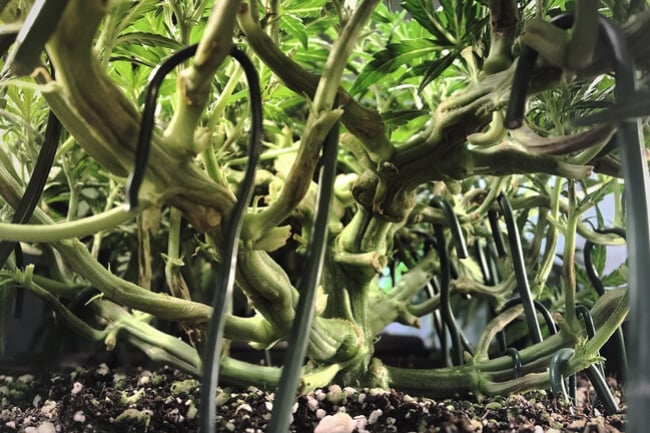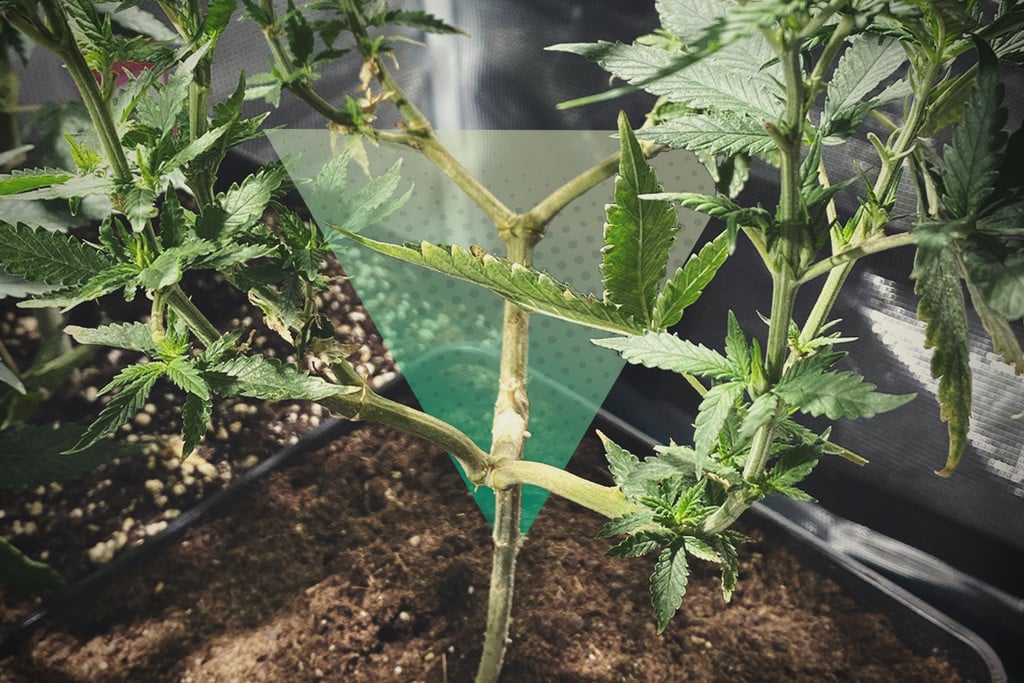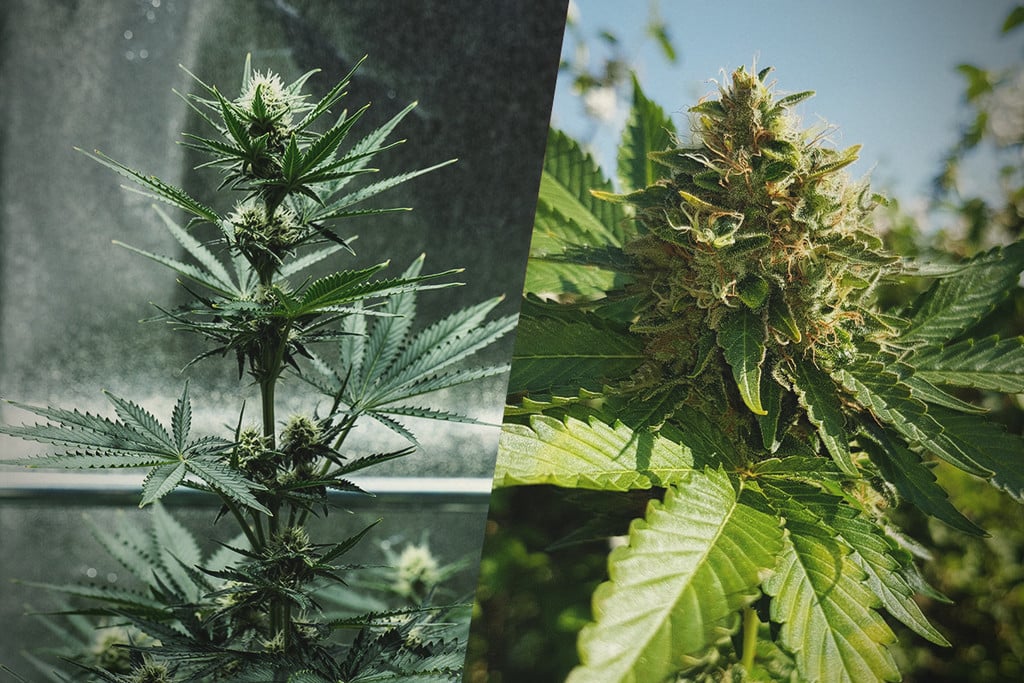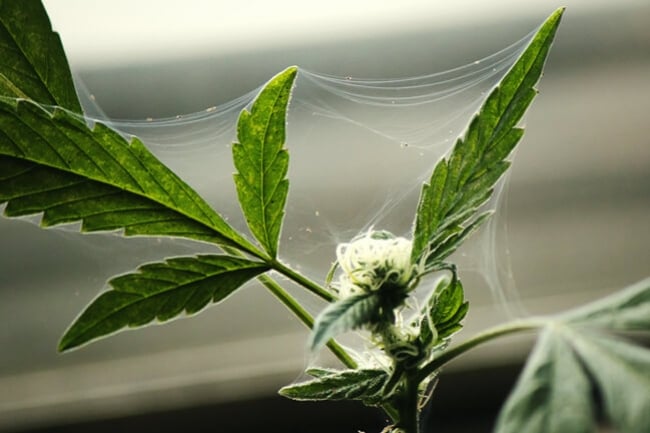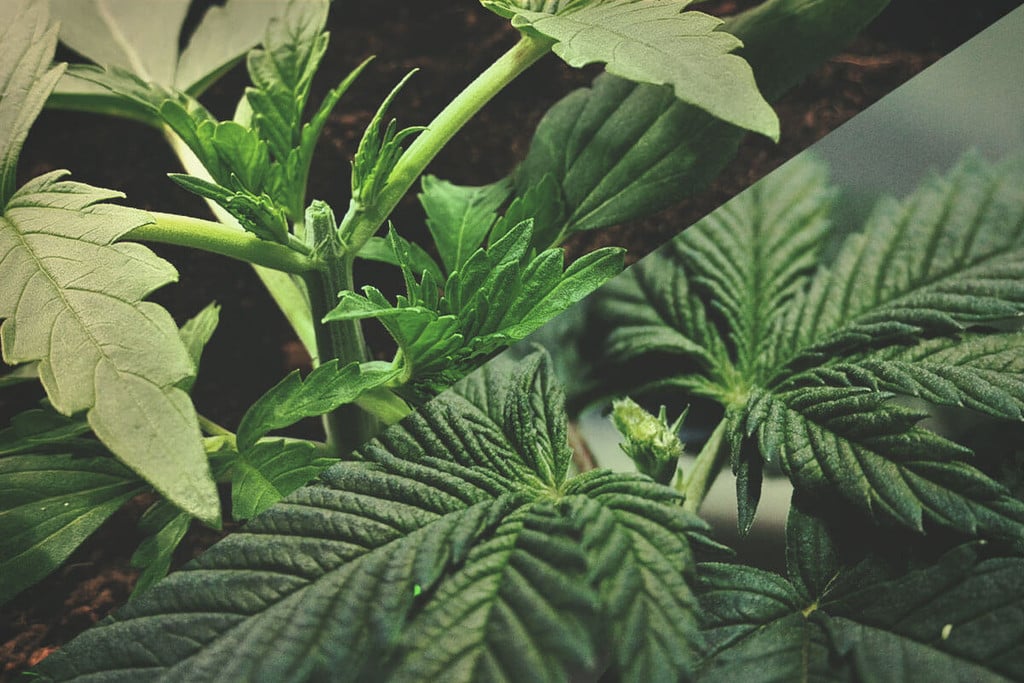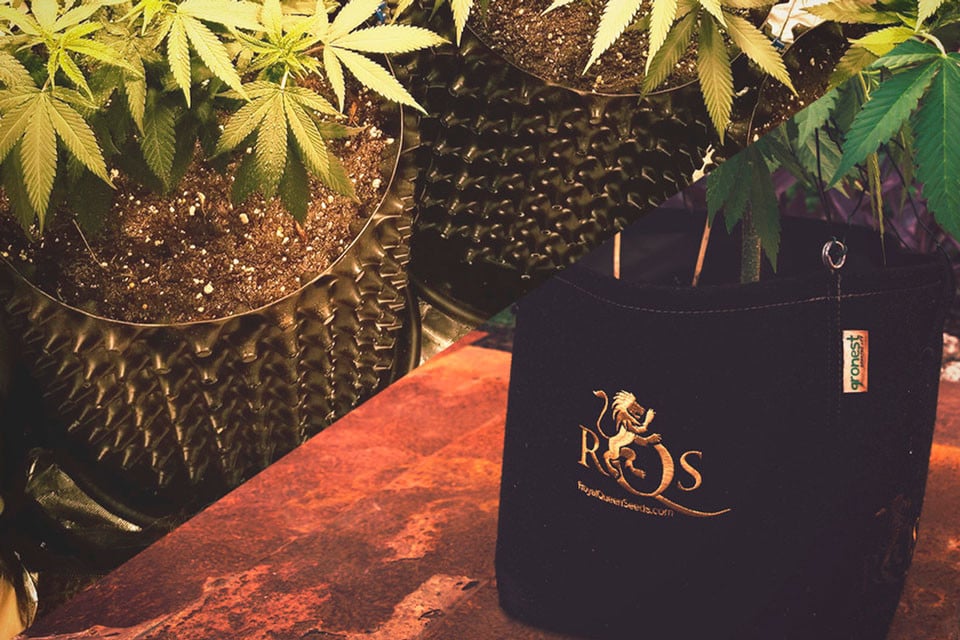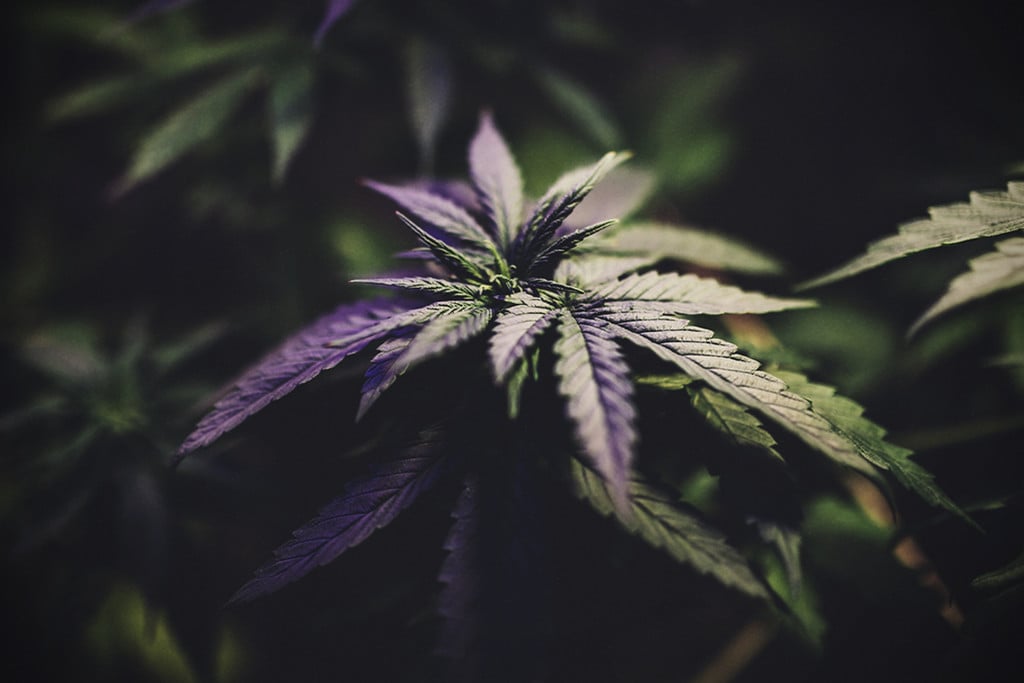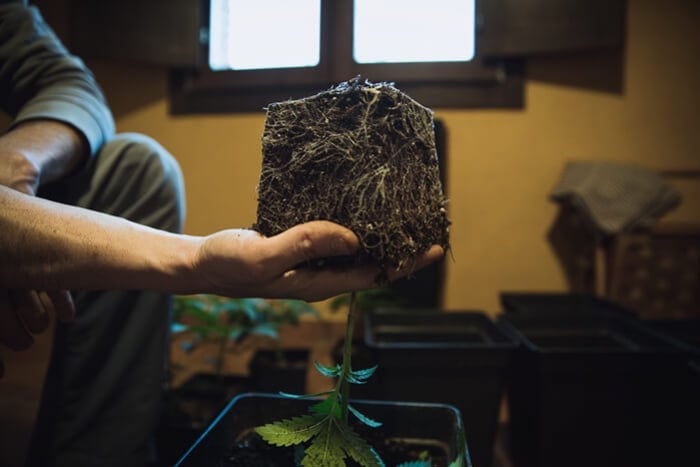.

How To Grow Great Weed On A Balcony Or Terrace
If you're planning on growing cannabis on your terrace or balcony, here are some important considerations to ponder in order to achieve excellent results.
Contents:
There are many reasons why you would want to use your balcony (or terrace) to grow a weed plant. First and foremost, the sun doesn’t send you bills at the end of each month. If it rains, you get the best quality water for free too. No need to invest in ventilation systems either, as the moving air will continuously replenish CO₂ levels.
Growing on a terrace is a great way for the novice grower to dip their feet into this highly rewarding hobby. You can even use a balcony to increase grow-op real-estate. Depending on the time of year, a terrace/balcony can be used as a veg room while your indoor room is in flowering mode. Advanced growers might also enjoy the longer seed-to-harvest cycle of a terrace, in favour of a more outdoorish grow.
No matter the case, there are some golden rules you should be aware of before you start a balcony grow. Some may seem evident to the more knowledgeable grower, while others might even surprise experienced green-thumbed guerrilla warriors.
The balcony basics
Does your balcony receive enough direct sunlight? Terraces are usually large enough that they will have more than enough sun throughout the day, but some balconies may be on the opposite side of a building, receiving only morning light.
For that, there is a perfect solution. Autoflowers. Using photoperiod varieties in this low light situation will render you puny little plants that will not produce any significant smokable bud.
Autoflowers will perform significantly better in this situation, given that their flowering phase is not contingent on a change in photoperiod. It is also highly recommended that the novice grower use autoflowers as their level of complexity is much lower, yet achieve comparable yields to some photoperiod cultivars.


Safety first part 1: Hide your plants
Regardless of whether you live in a cannabis-friendly or unfriendly zone, you should always treat your crop like the world’s most valuable treasure. Do you really want prying eyes overlooking your plantation?
Do your best to conceal your pants from a direct line of sight. Instead of letting your weed grow up to its full glory, perhaps it would be wise to employ some training techniques to your grow. There are many to choose from, but any of them done correctly will tame plant growth, promote side growth, and when done proficiently, potentially increase your yields considerably. So the question is, why not train your plant?
Here are some potential options:
- FIM – which stands for “Fuck, I Missed”, basically involves pinching the apically dominant shoots to promote the formation of several new dominant colas.
- Supercropping – involves pinching the stem and bending it 90º, causing a lesion to occur. If done early on before flowering, this stressful lesion will turn into a big and strong knuckle, providing extra support.
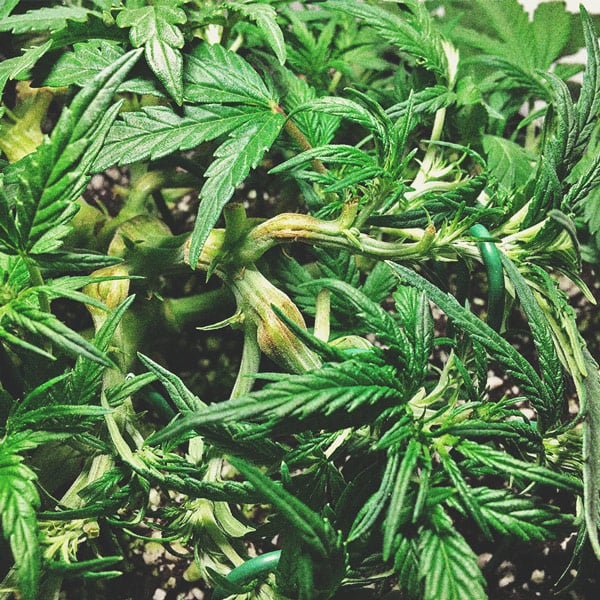
- ScrOG (Screen of Green) – employs the use of a horizontal net to bend and weave shoots through, forcing the plant to grow sideways. This maximises light penetration and controls growth.

- SOG (Sea of Green) – is a more advanced technique that isn’t very suitable for balcony/terrace cultivation. This involves growing numerous small plants together in close proximity.
- Mainlining – is a similar approach to ScrOG, but without the net. Only possible to do with seeds and not clones, as the latter grow asymmetrically. Pinch the apically dominant shoot to multiply the main cola into 2. Then, those 2 into 4, and so on, until you are satisfied. It will create a manifold of stems you can tie to the side of the container to promote an even canopy.
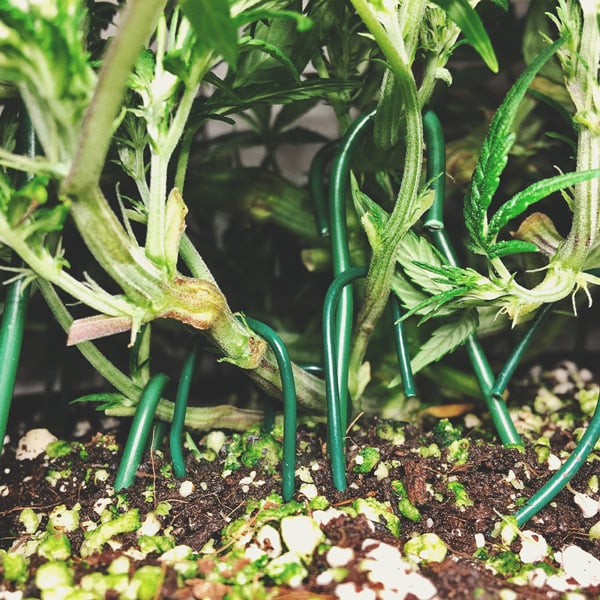
- Topping – is similar to fimming, but instead of pinching the top growth, it involves cutting it off entirely. This stimulates the production of two new dominant colas.

- LST (Low Stress Training) – is where you gently bend and tie branches to promote lateral growth and support optimal light exposure.


Safety first part 2: Cover the smell of weed
Cannabis is renowned for its pungent smell that can travel a considerable distance. While this may only be a significant concern once flowering is in full throttle, it is nonetheless a high-risk factor. While you cannot use carbon filters or ozone generators to cover the smell, you can do the exact opposite—increase the smell coming out of your garden.
Confused?
Fill your terrace or balcony with high-fragrance herbs, plants, and flowers known as “companion plants”. Gardenias, stargazer lilies, jasmine, honeysuckle, freesia, roses—these are but a few of the pungent flower options at your disposal. Even the tomato plant emits a strong odour, and you have the benefit of eating the fruits of your labour once they’re ripe. This will increase the garden’s fun factor for sure.
Use the right genetics
This is geared more toward the inexperienced grower. Some genetics (think sativa-dominant) are prone to massive vertical growth, while others (indica-dominant) become small, fat bushes. And then, there’s everything in between.
Avoid sativa landraces at all costs. You will most likely not be able to tame them. Royal Moby, Mother Gorilla, Royal AK, and other super-performing plants will be too much. Some Haze strains grow massively too. They will also take much longer to mature.
Select strong indica-dominant varieties, especially with Kush genetics in them. Bubble Kush, Pineapple Kush, OG Kush, and BubbleGum XL are a great starting point.
The Benefits of Growing Small Cannabis Plants
Growing cannabis on a balcony might mean you can only grow a small weed plant or two. Far from a problem, this actually offers growers a lot of advantages.
-
Much Easier To Care For
Smaller plants mean smaller problems. Growers will have a much easier time correcting nutrient deficiencies, insect invasions, and other plights when growing a small weed plant. Instead of attending to a giant canopy, growers only have to focus on a small surface area—vastly increasing their chances of success.
-
Neighbours Won’t See Small Cannabis Plants As Easily
Whether you grow in an area of decriminalisation of prohibition, it always helps to keep your horticultural hobby as private as possible. Small cannabis plants will help to minimise any neighbours or would-be thieves from getting eyes on your plants.
-
Small Buds Are Easier To Dry
Drying serves as one of the most critical stages of the post-growing process. Done properly, it will prepare your buds for curing and eliminate the chance of mould formation—a ghastly occurrence with the potential to ruin an entire harvest. Small cannabis plants produce small buds. They hold much less water, are less prone to mould, and are generally easier to dry.

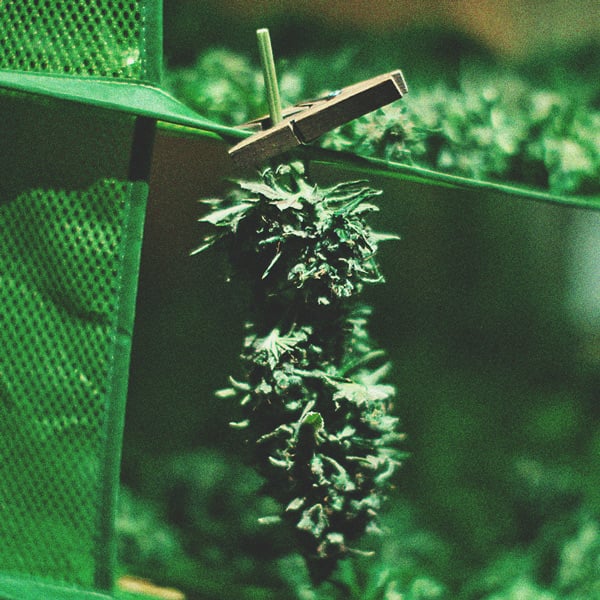
-
It Costs Less To Grow A Small Weed Plant
Small cannabis plants require fewer resources. You won’t need to spend as much on nutrients, containers, supplements, or stash jars. They’ll also do less damage to your water bill during a dry spell on the balcony.
-
You Can Experiment With Different Varieties
Growing just a few small cannabis plants means you can cultivate several different varieties if you have the wiggle room. Grow a selection of small cannabis strains to see which ones you like best. Observe their traits while they grow, experience their effects, and decide which genetics to bring forth into the next growing season.
Go with autoflowering cannabis
Autoflowering cannabis is particularly well-suited for growing on a balcony, terrace, or other small spaces. Here are some of the reasons why:
- Autos usually grow to a much smaller size than photoperiod cannabis, with some only reaching 40–60cm in height.
- The smaller size of many autoflowers keeps your grow more discreet and reduces the risk of detection.
- Autoflowers don’t rely on a change in light cycle to start and maintain flowering. You can plant and harvest them at any time of year.


Here is a small selection of autoflowering strains that are great to grow on a balcony:
Royal Dwarf
Royal Dwarf is a super compact strain that normally won’t get taller than 40–60cm. The little “bonsai cannabis” as some call her isn’t just great when space is scarce; she is also super easy to grow, so even beginners can see good results.
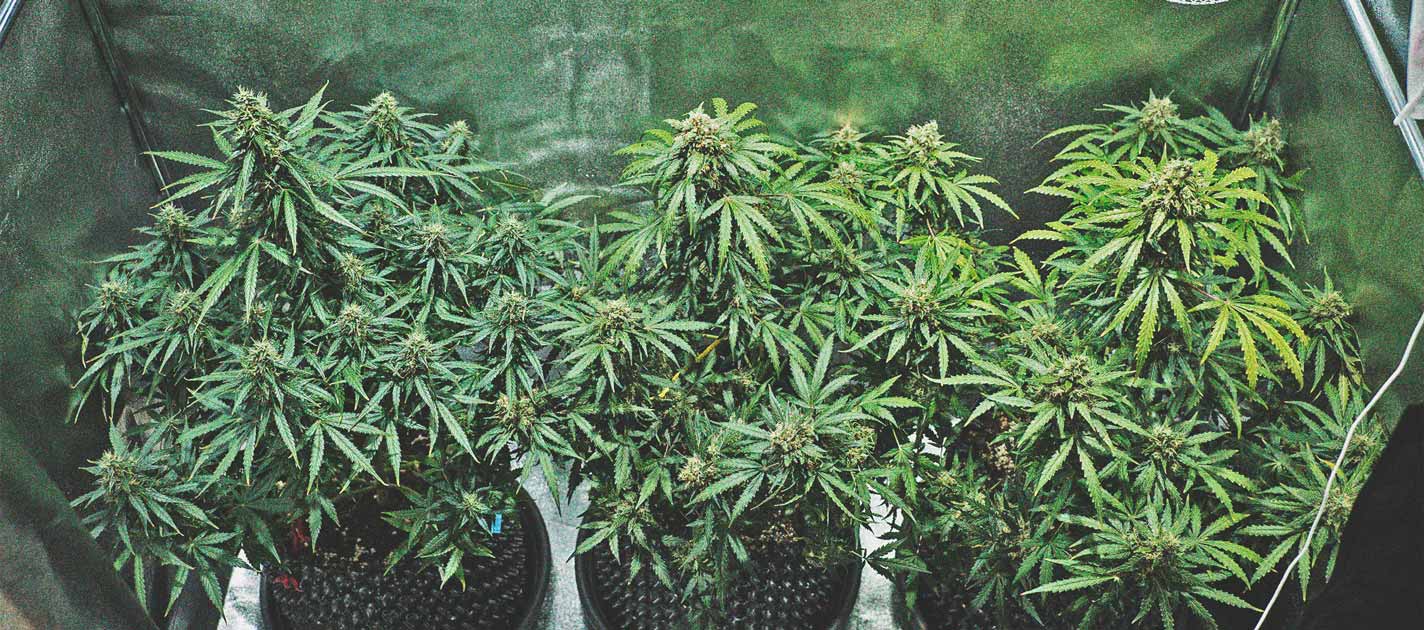
Royal Dwarf
|
|
Skunk x Ruderalis |
|
|
150 - 200 gr/m2 |
|
|
40 - 70 cm |
|
|
6 - 7 weeks |
|
|
THC: 13% |
|
|
Sativa 10% Indica 60% Ruderalis 30% |
|
|
30 - 80 gr/plant |
|
|
50 - 90 cm |
|
|
9 - 10 weeks after sprouting |
|
|
Creative, Motivating |
Royal Bluematic
Royal Bluematic is RQS’ autoflowering version of the famous Blueberry. The strain’s buds please with a delightfully sweet Blueberry taste and a smooth smoke that gives a nice, relaxing stone. A height of only 60–75cm makes the strain a good variety for balconies and terraces.

Royal Bluematic
|
|
Blueberry x Ruderalis |
|
|
425 - 475 gr/m2 |
|
|
60 - 75 cm |
|
|
7 - 8 weeks |
|
|
THC: 14% |
|
|
Sativa 10% Indica 60% Ruderalis 30% |
|
|
70 - 120 gr/plant |
|
|
70 - 100 cm |
|
|
11 - 12 weeks after sprouting |
|
|
Powerful , Stoned |
Purplematic CBD
Purplematic CBD is a balcony favourite for those who want to grow cannabis with ample amounts of CBD and essentially no THC. A whopping 17% CBD and less than 0.5% THC means users can enjoy a dose of CBD any time, without worrying about getting high. She isn't the smallest auto around (140cm max), but will still fit on most balconies.

Purplematic CBD
|
|
Kush Rose Auto CBD x Afghan Rose Auto CBD |
|
|
375 - 450 gr/m2 |
|
|
70 - 120 cm |
|
|
7 - 8 weeks |
|
|
THC: 0,5% |
|
|
Sativa 5% Indica 90% Ruderalis 5% |
|
|
110 - 150 gr/plant |
|
|
100 - 140 cm |
|
|
8 - 9 weeks after sprouting |
|
|
Calming, Clear |
Use the right pot size
The pot size you choose for your weed plays a big role in how your plants will grow: a small container means a small plant! As such, to reduce the height of your balcony-grown cannabis, you can simply scale down your container size.
Growing smaller plants doesn’t mean you need to make sacrifices when it comes to your yields. For example, rather than growing fewer larger plants, you can just grow several smaller ones.
There’s only one thing to keep in mind: in some regions, there may be legal limits on how many plants one is allowed to have, rather than how much bud one is growing. Even if this doesn’t make too much sense, it’s nevertheless smart to consult your local laws. Keep it safe!
What kinds of pots are best?
You can find various types of pots that differ in size and in the materials they are made from.
While your cannabis may be okay growing in simple plastic containers, for best results we do recommend fabric pots. These are containers made from a geotextile fabric that allows roots to breathe for optimal results.
If you have a desired plant size in mind, which is likely when growing in a restricted space, you can control how tall your plants get by choosing the appropriate pot size. So, choose a small pot to ensure your cannabis won’t grow taller than you really want. Of course, if you have the space, you can go with larger pots so you can grow bigger plants.
Here is a rough guide to help you find the right pot size for your cannabis:
- ½ litre: Seedlings and vegetative phase plants up to ~15cm
- 2–3 litres: Plant size up to ~25cm
- 5 litres: Plant size up to 60cm
- 11 litres and more: Average plant height
Protect your plants
If a storm approaches, beware of strong winds, especially if you live on the higher floors of a building. Gale force winds can easily break stems or topple over a vase. Long periods of rain can stunt plant growth as the soil becomes supersaturated with water. Furthermore, very high humidity for too long can cause bud rot and destroy your flowers.
The same goes for peak-of-the-summer heat. Plants can drink water very fast, and cannabis is a very thirsty lady. If you go out for the weekend and forget to water your plants before, you could very well return to a bone-dry plant. They are very resilient, but not immortal.
Always be on the lookout for pests. Growing outdoors involves regular plant inspection. The best method is prevention, and there are dozens of bug-repellent companion plants you can add to your garden that will help tremendously in keeping your crop clean from infestation:
- Basil – repels thrips, beetles, aphids, and flies in general

- Garlic – pest-repellent, but also a strong fungicide
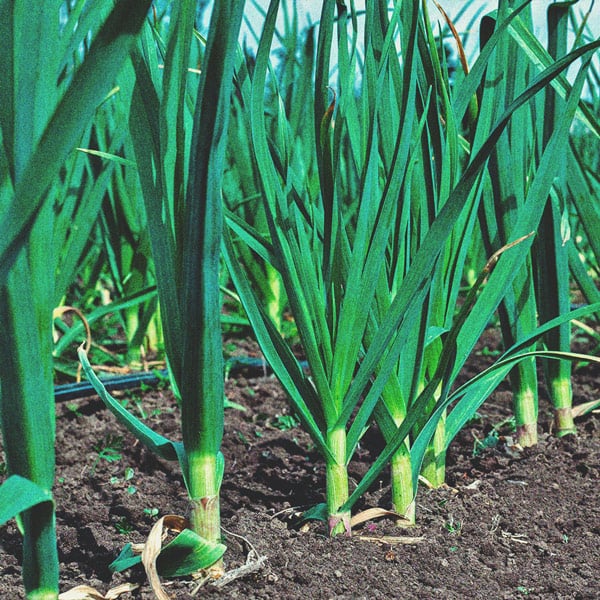
- Marigolds – preferred over weed by bugs, so planting them around your cannabis will distract them
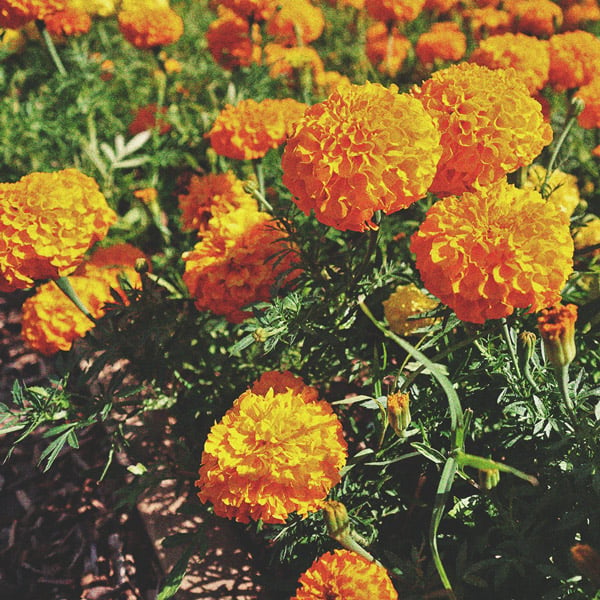
- Petunias – great against squash bugs, beetles, and aphids.

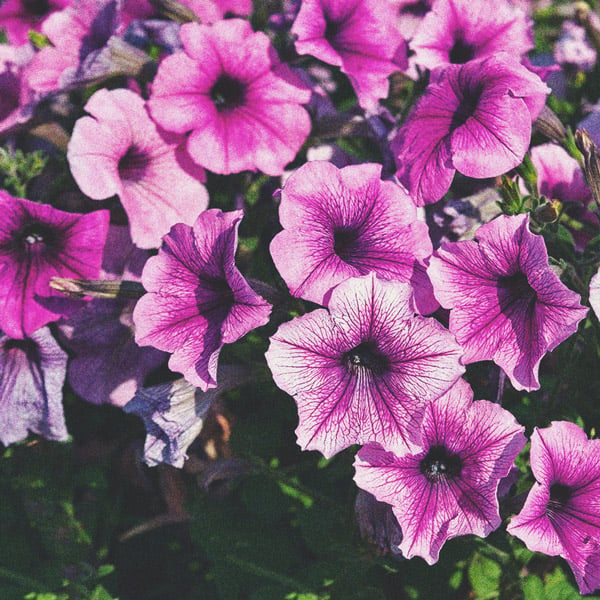
Do not use chemical pesticides. They are harmful to the environment and a potential risk to your health if smoked. Regular use (every other week or once a month) of neem oil and pyrethrum-based insecticide mixed with propolis will do a great job against spider mites, whiteflies, aphids, and even fungal disease.






























